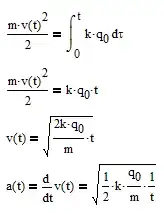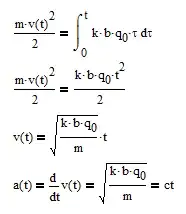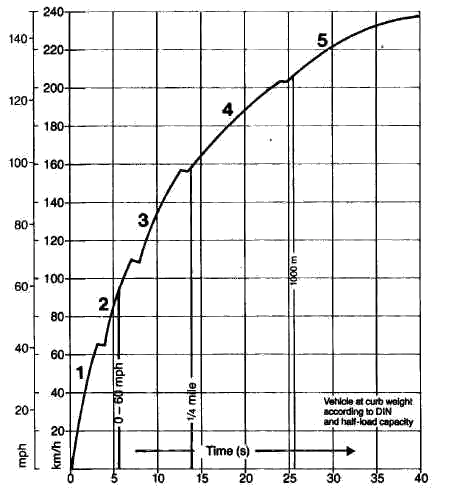Jerk in a Car
We should probably avoid talking about a car's gas pedal. Without going into too much detail, imagine when you floor it in a car. Once you've got the pedal all the way down, the car continues to accelerate, but eventually (assuming a long stretch of flat road) you will reach some steady state speed and stop accelerating. So with the pedal in a constant position, you're seeing non-constant acceleration.
If you want to stick with something familiar (I'll stay in a car), the above actually illustrates jerk fairly well: your acceleration goes from positive (non-zero) to zero. That's jerk, albeit negative jerk. Positive jerk is a bit more exciting, so let's try and look at that.
Let's assume you're driving a manual transmission car (automatic shifts will cause complications). If you're driving along at very low RPM and you push the accelerator down, you'll notice that the car accelerates, but not very quickly. This is because little power is available at low RPM. But as the car picks up speed and the RPMs increase, you eventually enter the engine's "power band" and the car will accelerate much more quickly.
Under Idealized Assumptions
I think it's worth mentioning that under your idealized gas pedal assumptions, you are correct. If the acceleration of the car is proportional to the gas pedal's angular displacement, then your second example in which you push the pedal down at a constant rate will be constant jerk with no jounce.
Jerk(s) Everywhere
I think the main problem you're running into is that you want to illustrate a practical example of jerk with no jounce. However, for real (practical) motions, this simply isn't possible. Here's a scenario that isn't terribly illuminating in a practical sense, but shows why jerk (and jounce/snap, and crackle, and pop) is unavoidable for useful motions:
Start with an object at rest. Velocity, acceleration, jerk, etc, are all zero and not changing with time.
Move the object any amount.
At some point in this motion, velocity was non-zero. Since velocity changed from zero to non-zero, there was non-zero acceleration.
Since acceleration changed from zero to non-zero, there was non-zero jerk.
Since jerk changed from zero to non-zero, there was non-zero jounce.
Continue ad infinitum (or ad nauseam, whichever comes first)
You may protest that you're object need not start from rest, but the above logic can apply starting from any change in any derivative of position. More concretely, any time you accelerate an object, you can go straight to step 3. Of course, things may no longer be changing "from zero to non-zero", but they change from their initial value to some different final value.


